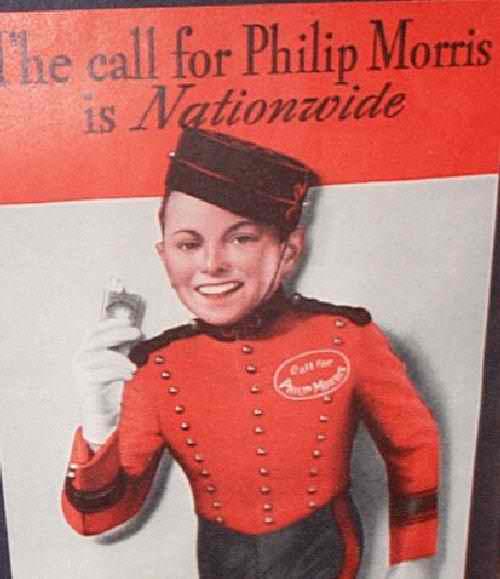
Figure 1.--This classic advertisement featuring a hotel page or bellhop wearing a classic uniform appeared on early American television. |

|
Pageboys need to be mentioned under the catergory of workers. The term apparently derives from the mideieval pages who attended persons of rank. I'm not sure when hotels began uniforming boys and calling them pages to perform tasks at the request of guests. I think probably the 19th century. Working class boys in England would enroll at age 14 (school leaving age in Britain pre-1944) to work in hotels, theaters, or clubs as well as on ships. Boys also worked as pages/message boys for private companies. HBC has only limited information. A HBC reader reports," I recall doing some messagering work in the early 1970s and having to collect some airline tickets in Bond Street. Waiting at the counter was a boy of about 16 years in pageboy rig, probably from a posh hotel." They often wore very destinctive uniforms. The classic design of uniform, was based on late-Victorian British military uniform. The most notable feature of the classic pageboy uniform was the pillbox cap (figure 1). The cap was often worn at a rakish angle and held on with a chip strap. The rest of the uniform varries, but commonly had military styling. This outfit was adopted all over the world, especially in the United States and is still seen today in especially posh hotels. I believe it was a standard throughout Europe. Americans of an earlier generation will recall a hotel page in early 1950s TV who was calling Philip Morris, a brand of cigarettes. The same military uniform, or at least the pillbox cap, was also adopted by the Boy's Brigade for their uniform and like hotel pages worn for decades after it was discarded by the army. Hotel pages, unlike the Boys' Brigade members, always wore long pants uniforms.
The term apparently derives from the mideieval pages who attended persons of rank. I'm not sure when hotels began uniforming boys and calling them pages to perform tasks at the request of guests. I think probably the 19th century. In America the term bellhop became more common, which was a colloquial version of bellboy. The term developed because the page was expected to get moving (hopping) as soon as he heard a bell that a desk clerk would summons him with to help guests with luggage or provide other services.
Working class boys in during the 20th century England would enroll at age 14 (school leaving age in Britain pre-1944) to work as pageboys. Earlier I'm not sure what the pattern was. I'm also not sure how page boys were recruited in the United States and other countries.
|
Page boys are most assocaiated with hotels. They in fact worked in other establishments, includuing hotels, theaters, or clubs as well as on ships. We note British ship's pages
during the 1930s employed on passenger and cruise ships. I assume that other countries also had ship pages. Boys also worked as pages/message boys for private companies. HBC has only limited information. A HBC reader reports," I recall doing some messagering work in the early 1970s and having to collect some airline tickets in Bond Street. Waiting at the counter was a boy of about 16 years in pageboy rig, probably from a posh hotel."
Only boys were hired as pageboys. I do not know of any girl pages. As far as I know, this continues to be the pattern at modern hotels.
Pageboys often wore very destinctive uniforms. This was especially true of the boys working for prestigious, posh hotels or the major ocean liners. The classic design of uniform, was based on late-Victorian British military uniform. We suspect that it was adopted by hotels after being adopted by the Boys' Brigade in 1884, but we can not yet confirm this. The most notable feature of the classic pageboy uniform was the pillbox cap (figure 1). The cap was often worn at a rakish angle and held on with a chip strap. The rest of the uniform varriesd, but commonly had military styling. This outfit was adopted all over the world, especially in the United States and is still seen today in especially posh hotels. We believe it was a standard throughout Europe. The pillbox cap was not the only cap worn, but it was very common. We do not know if there were any destinctive national styles. Americans of an earlier generation will recall a hotel page in early 1950s TV who was calling Philip Morris, a brand of cigarettes. The same military uniform, or at least the pillbox cap, was also adopted by the Boy's Brigade for their uniform and like hotel pages worn for decades after it was discarded by the army. Hotel pages, unlike the Boys' Brigade members, always wore long pants uniforms.
We do not yet have much country information. We think the practice of hiring boys for hotel pages was very common in Europe, but we have not yet found many photogrphic imags. We have found some American hotel page images beginning in the in the 1880s. We are notvsure just when thus practice began in America, but suspect it was before the 80s. We continue to see hotel pages in the early-20th century, but as child labor and school compulsory attendnce laws became more pronounced, we no longer see boys being hired to fill the positions.
Butterick offerd a boy's fancy dress pattern for bell hop costumes in the early-20th century. We are not sure how popular they were with boys.
Navigate the Children in History Website:
[Return to the Main pageboy page]
[Return to the Main working boys clothing page]
[About Us]
[Introduction]
[Biographies]
[Chronology]
[Climatology]
[Clothing]
[Disease and Health]
[Economics]
[Freedom]
[Geography]
[History]
[Human Nature]
[Ideology]
[Law]
[Nationalism]
[Presidents]
[Religion]
[Royalty]
[Science]
[Social Class]
[Bibliographies]
[Contributions]
[FAQs]
[Glossaries]
[Images]
[Links]
[Registration]
[Tools]
[Children in History Home]
